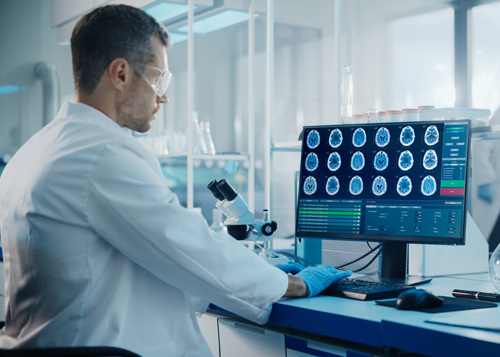Alcohol is the third leading preventable cause of death in the United States. Statistics compiled by the National Survey on Drug Use and Health (NSDUH) indicate about 88,000 deaths each year are related to alcohol use. While many of these deaths are related to traffic fatalities, alcohol is also frequently linked to deaths from liver disease, homicide, suicide, falls, drownings, and other injuries.
What was once called alcoholism, alcohol abuse, or alcohol addiction is now classified as either Alcohol Use Disorder (AUD), focusing only on alcohol use, or Substance Use Disorder (SUD), focusing on drug and alcohol use.
The fifth edition of the Diagnostic and Statistical Manual of Mental Disorders (DSM-5) lists the diagnostic features of all recognized mental disorders, including AUD and SUD, and guidelines for determining the severity of the disorder.
The National Institute on Alcohol Abuse and Alcoholism (NIAAA) defines alcohol use disorder (AUD) as “a chronic relapsing brain disease characterized by an impaired ability to stop or control alcohol use despite adverse social, occupational, or health consequences.”
The 2018 NSDUH report highlights the prevalence of AUD in the U.S., finding over 14 million adults age 18+ and over 400,000 adolescents ages 12–17 qualify for the disorder.
Alcohol affects areas of the brain regulating mood, emotions, movement, and behavior. Many effects of alcohol consumption are obvious: lack of coordination, slurred speech, slower reaction time, personality changes, and impaired judgment. Other effects are internal and not readily apparent. While these impairments may resolve when drinking stops, long-term alcohol use can cause permanent damage to the brain and other organs.
Alcohol is a depressant, slowing down brain function and energy levels. The brain seeks to compensate for the sedative effect by stimulating nerve activity to increase energy and alertness. Once the brain has adapted to the regular presence of alcohol, it will stay in this unnatural state of high alert even when alcohol is no longer present. This results in intense cravings and withdrawal symptoms as the brain adjusts to the absence of alcohol and attempts to return to a state of equilibrium.
When alcohol interacts with the pleasure and reward center of the brain, higher than normal levels of serotonin and dopamine, often called “feel good hormones,” are released. These chemical messengers regulate many body functions, including sleep, memory, and emotional well-being. Elevated levels of serotonin and dopamine serve to reinforce the behavior that triggered the increase, causing a strong desire to repeat the experience. As alcohol use continues, the brain requires increasingly higher amounts to achieve the desired effects. Called tolerance, this cycle often leads to dependence and addiction to alcohol.
According to the Mayo Clinic, warning signs of AUD may include:
Other behaviors that indicate a problem with alcohol may include engaging in unsafe sex, lying about drinking habits, centering activities around drinking, and drinking to feel comfortable in social situations. Physical and emotional signs of a serious AUD may also include blackouts or memory loss, intense mood swings, and an obvious decline in hygiene. Health, financial, and legal problems often accompany an AUD.
At StoneRidge Centers, we understand that each individual is unique and to most effectively help those with an Alcohol Use Disorder to recover, the approach must be equally unique. This is why we’ve developed a program that combines scientifically backed, brain-focused treatment.
Alcohol use has a profound impact on the brain, affecting our emotions, judgment, motor abilities, behavior, and memory. For long-term recovery, we must first heal the brain. At StoneRidge, we employ a combination of innovative, specialized treatment and evidence-based clinical therapy to do just that. The StoneRidge program is overseen by our triple-board-certified medical director, supported by a compassionate, highly trained staff.
Upon admittance to a StoneRidge program, all patients receive a comprehensive screening to determine overall mental and physical health and wellness. StoneRidge health professionals conduct nursing, psychiatric, and clinical assessments and use the findings to develop a treatment plan tailored specifically to each patient’s needs. In cases of a dual diagnosis or the presence of both a substance use disorder and a co-occurring mental illness, we address both disorders in the treatment plan.
Our treatment plans may include clinical modalities such as Cognitive Behavioral Therapy, Dialectical Behavioral Therapy, and individual, group, trauma, and family therapy. At StoneRidge, we have found the combination of clinical modalities with brain-focused treatments like Transcranial Magnetic Stimulation (TMS), qEEG/Brain Mapping, Neurofeedback, and Ketamine Therapy is particularly effective. Our medical director determines the appropriate treatments for each patient.
At StoneRidge, we have seen firsthand how Cognitive Behavioral Therapy (CBT) and Dialectical Behavioral Therapy (DBT) help patients better understand how their thoughts and emotions feed the addiction cycle, how to change those thoughts, and how to develop key skills for recovery and relapse prevention.
Alcohol is often used as a coping mechanism, a way to self-medicate in an effort to soothe anxiety, depression, or fears. When alcohol depresses brain activity, a person experiences a reduction in anxiety and an increase in feelings of well-being. Both CBT and DBT are research-based, therapeutic techniques that help patients recognize these same negative thought patterns and learn how to overcome them without the use of alcohol.
Our DBT model equips patients with skills like Distress Tolerance, Emotional Regulation, and Interpersonal Effectiveness to help them become more aware of their thoughts, feelings, actions, and reactions.
At StoneRidge Centers, we bring leading brain-focused care and science into a clinical recovery setting, combining the benefits of an addiction treatment program with insights from cutting-edge research.
Evidenced-based modalities we use include:
We have found that healing the brain and attaining long-term recovery is most effectively achieved through a combination of evidence-based therapy techniques, nutrition, and exercise.
We incorporate the following programs into patient treatment plans:
Research published by the National Institutes of Health has found that “complementary therapies like yoga and mindfulness meditation are increasingly recognized for their ability to enhance recovery from addiction, in part by targeting stress-related cognitions, emotions, and behavioral urges such as craving(s).”
StoneRidge Centers programs combine the best in therapeutic approaches with the best research-based scientific approaches for optimum healing and recovery. No matter where you are on your recovery journey, StoneRidge
Contact us today for more information and to learn how we can help you or a loved one heal from the damage caused by alcohol.

TMS, Ketamine & Neurofeedback
Brain-focused treatment that sets us apart.
StoneRidge offers what few other practices provide – innovative, scientifically proven, and research-backed therapeutic options. From Transcranial Magnetic Stimulation (TMS) to Brain Mapping, our treatment combines trusted practices with modern approaches, ensuring our patients receive the best all-around care.


We exercise progressive, leading brain science in our treatment approach for patients in the Prescott Valley community and across the country who are struggling with mental health and addiction challenges.
© 2024 StoneRidge Centers – Prescott Valley. All Rights Reserved.